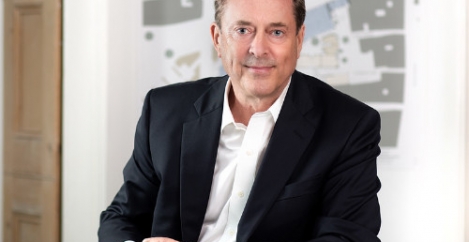August 8, 2019
Incoming BCO President commits to focus on wellbeing
 Paul Patenall, Projects Director at U+I, has been elected as President of the British Council for Offices (BCO) and will focus on the positive impact the industry can have on wellbeing. Patenall set out his vision as Chair of this year’s BCO Conference, held in Copenhagen. The event explored the Danish concept of Arbejdsglæde, which is based on a balanced and considerate approach to work. The concept informs the city’s workplaces, which are renowned for their bold designs, intelligent use of natural light and space and for encouraging occupants to stay active throughout the day.
Paul Patenall, Projects Director at U+I, has been elected as President of the British Council for Offices (BCO) and will focus on the positive impact the industry can have on wellbeing. Patenall set out his vision as Chair of this year’s BCO Conference, held in Copenhagen. The event explored the Danish concept of Arbejdsglæde, which is based on a balanced and considerate approach to work. The concept informs the city’s workplaces, which are renowned for their bold designs, intelligent use of natural light and space and for encouraging occupants to stay active throughout the day.
The Conference also recognised the importance of mental health and its connection to a healthy work and life balance. The event’s sponsored cycle raised more than £20,000 for MIND, one of the UK’s leading mental health charities.
The BCO claims to have consistently explored how workplaces influence wellbeing. Last year, the organisation released its Wellness Matters report, which outlined how workplaces can be designed to aid wellbeing. This is continued in the recent Guide to Specification, which includes a Health and Wellbeing chapter for the first time and takes a ‘people-first’ approach.
Patenall succeeds Kostic-Samen, who has completed her twelve months in the role. Kostic-Samen, founder of KKS, championed diversity and the creation of more inclusive workplaces.
Patenall said: “It is an honour to become President of the BCO. As an industry, our designs can encourage greater wellness for workplace occupiers. To achieve this, we should pursue more innovative design that puts people first, rather than rely on traditional or outmoded concepts.
“Wellness, of course, is about more than just design. We must take mental health seriously, which is why I am so proud of the BCO’s fundraising for MIND. We should also consider how we can aid work and life balance.
“I would like to express my gratitude to Katrina and her stellar work. It’s vital that our industry works for wider society, and her work as President has changed how we think about inclusive design.”














